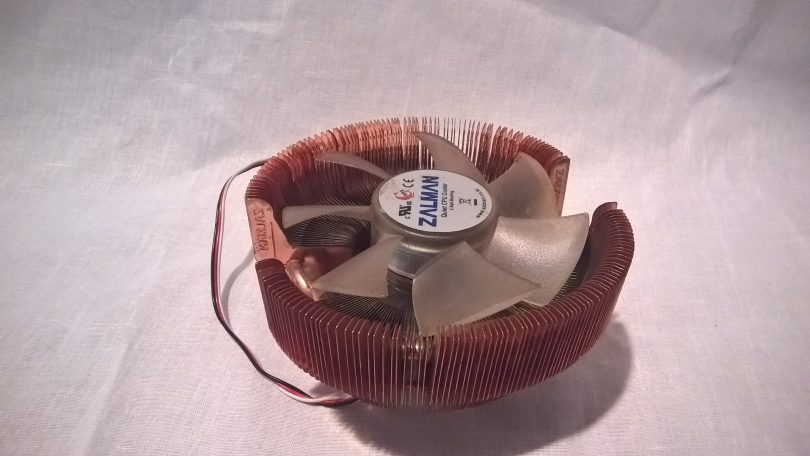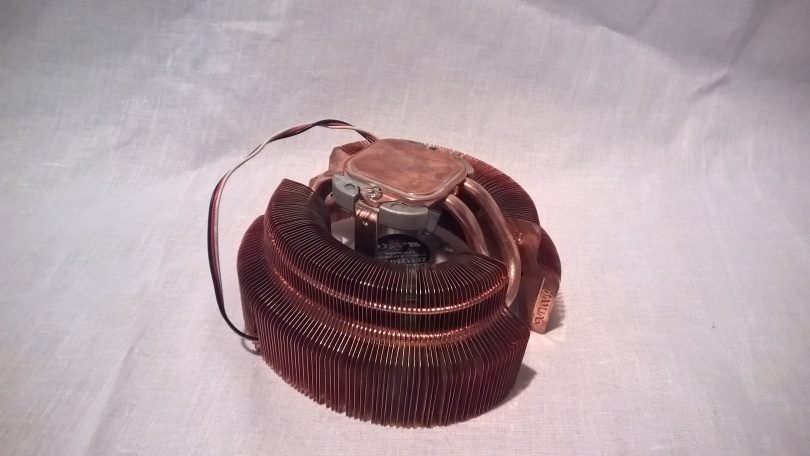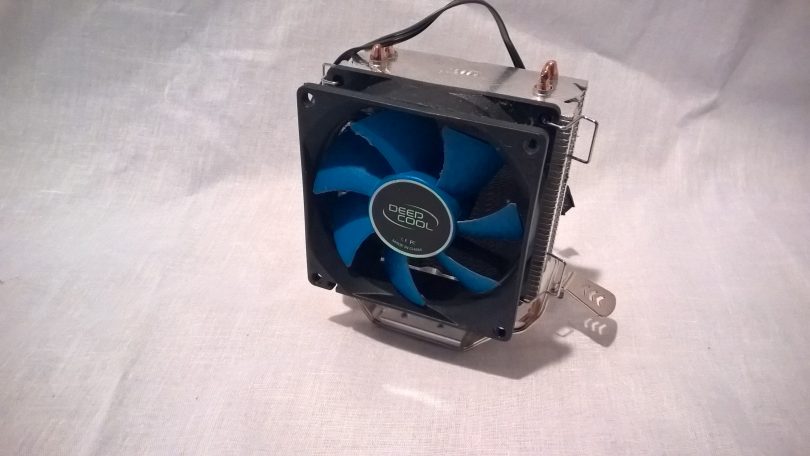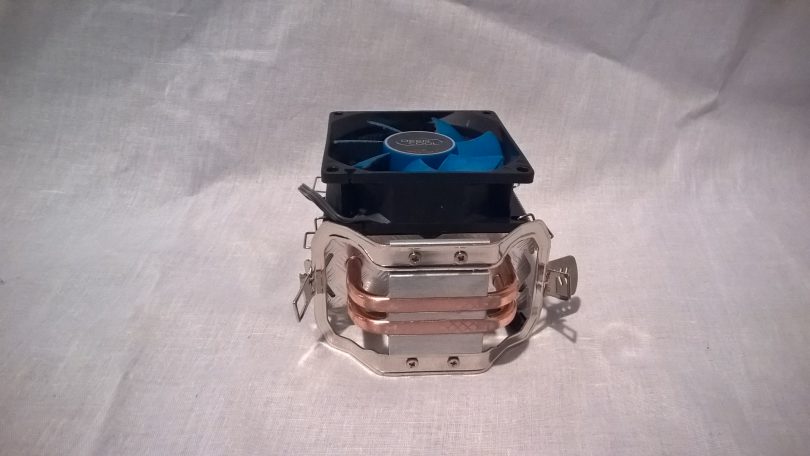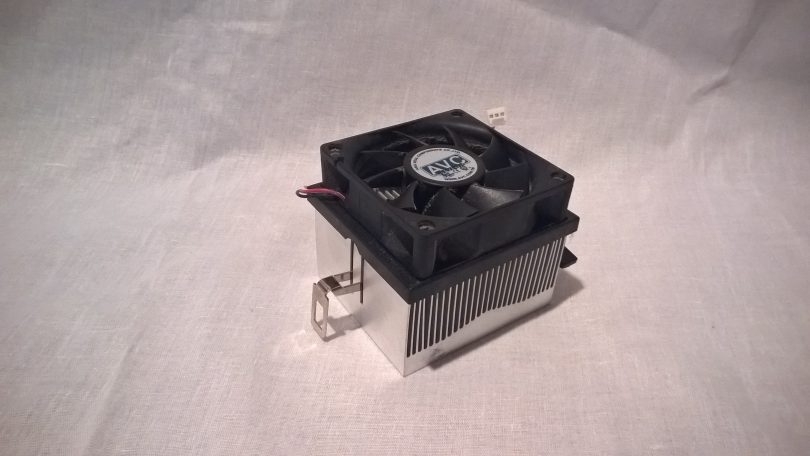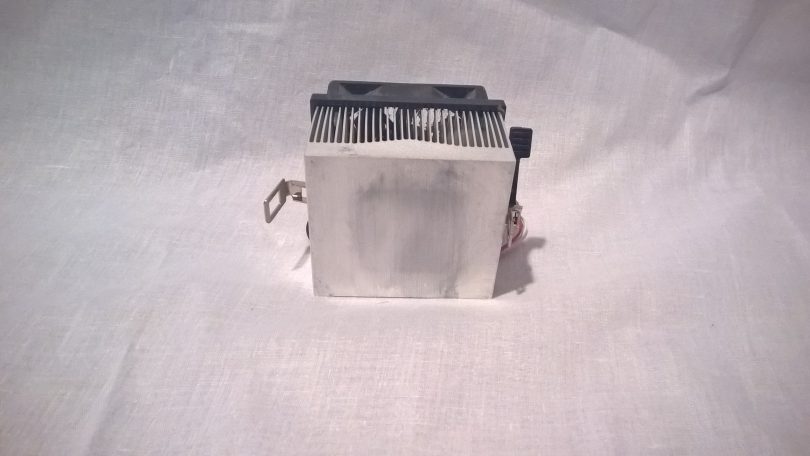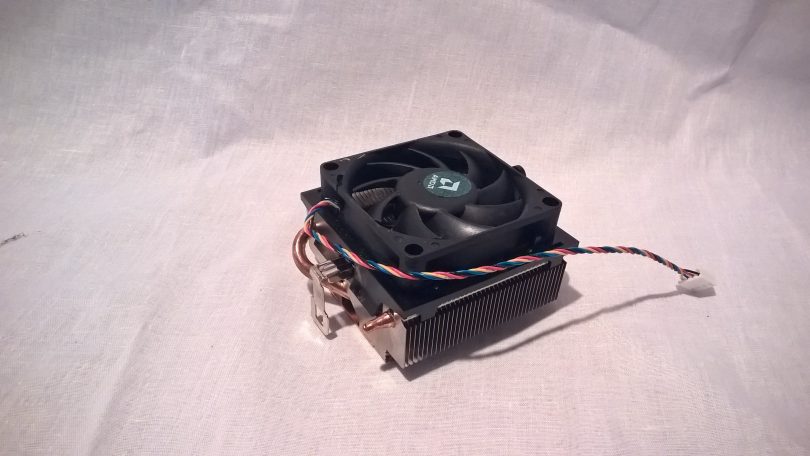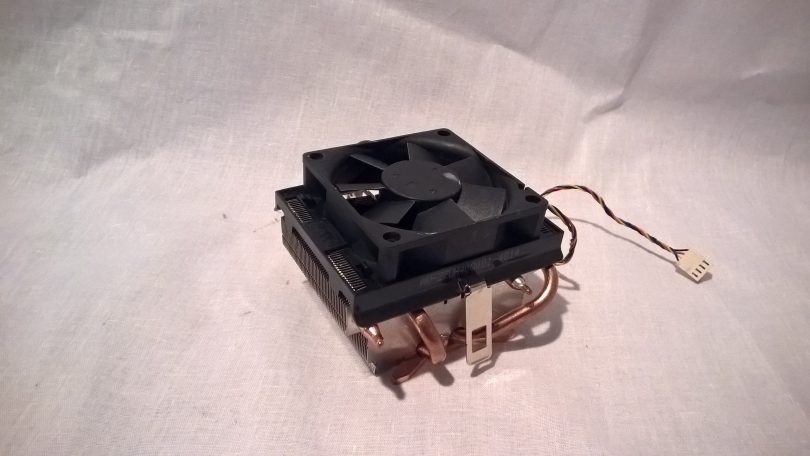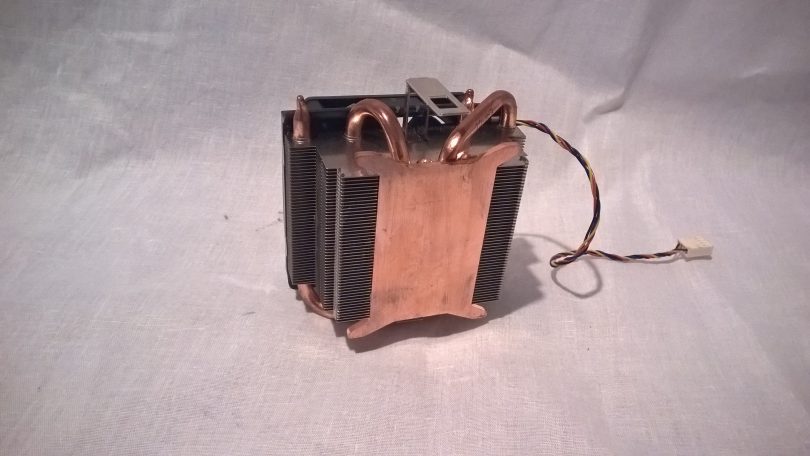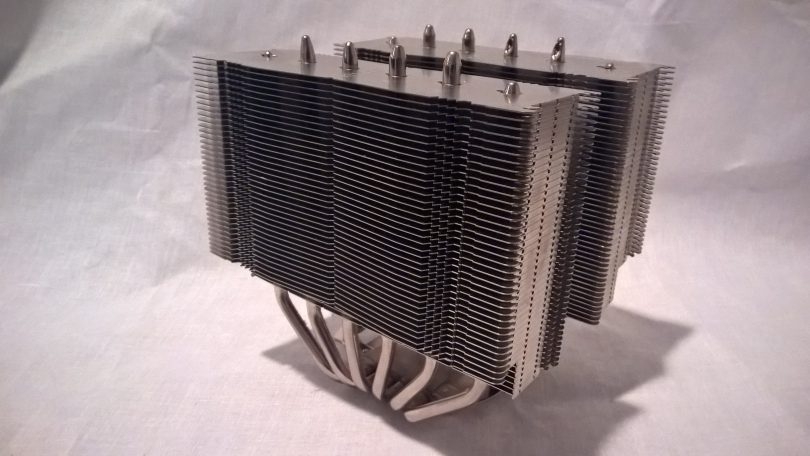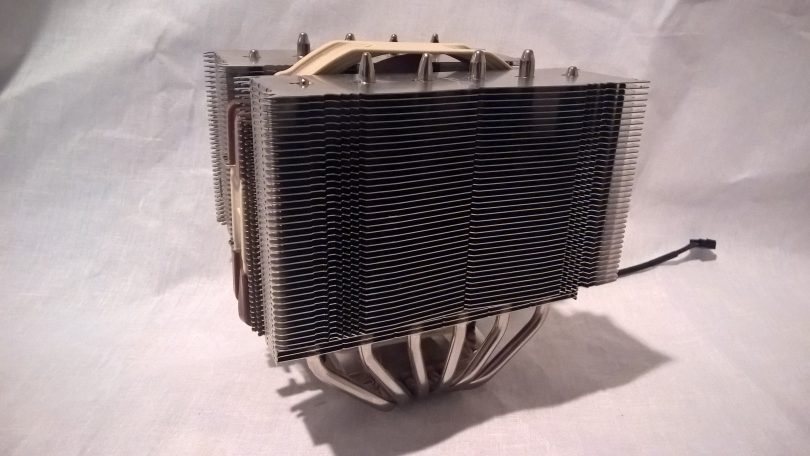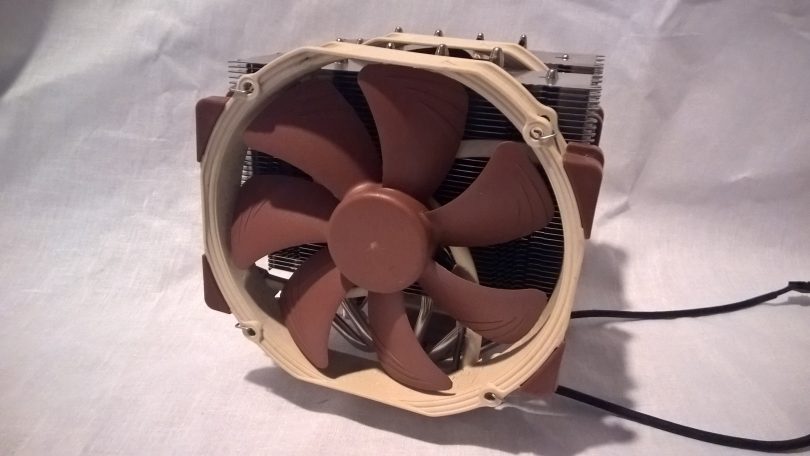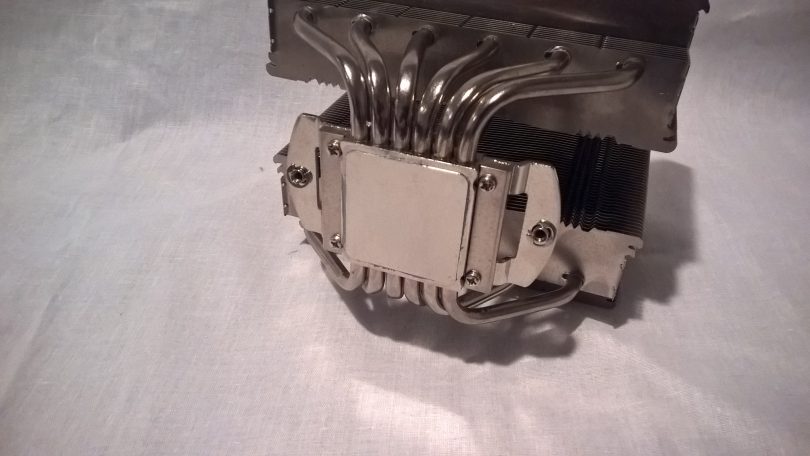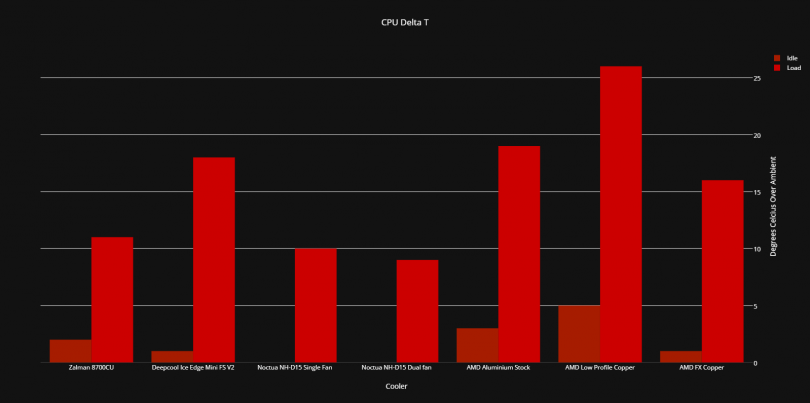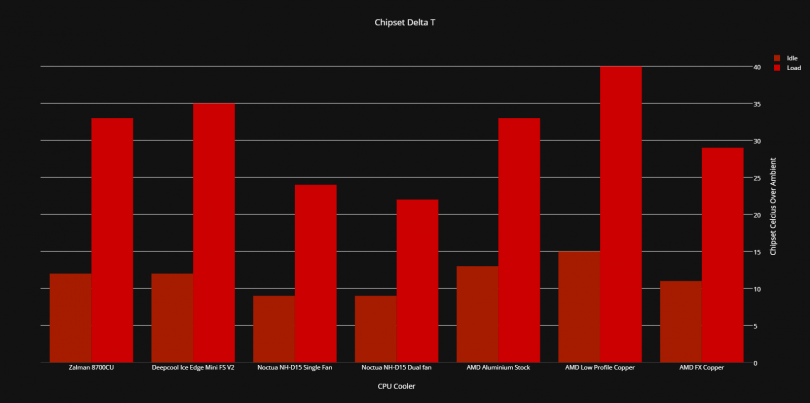Any good review website needs a solid test bench for reviewing hardware. Now it’s time to introduce ours. It does not yet have a name, and it’s a bit camera shy, but it does the job well.
Specifications
The test bench currently includes the following hardware;
- Gigabyte 970-D3P Motherboard
- Phenom II 555BE @ 3.2GHz
- 8GB Crucial DDR3-1600 Value RAM (single DIMM)
- Hitachi 60gb 2.5″ 5400RPM SATA HDD (temporary!)
- EVGA GT240 1GB
- Thermal Master 420W Power Supply
- Aluminium Test Bench Chassis
[mks_separator style=”blank” height=”2″]
Now on to the coolers.
Zalman CNPS8700CU-LED
This cooler is made entirely of copper, and features 2 heatpipes and a 120mm fan. The fan spins between 1200-2300RPM and the manufacturer claims a sound level of 32.5dBa. The heatsink weighs 475 grams and measures 66mm high, 124mm wide and 120mm deep. The cooler supports AMD sockets 754, 939, 940, AM2, AM2+, AM3, AM3+, FM1, FM2 and FM2+. It also supports Intel’s sockets 478, 775, 1155, 1156, 1150, 1151.
Deepcool Ice Edge Mini FS V2
This budget cooler comes from Deepcool. It features twin heatpipes and is cooled by an 80mm fan. It is compatible with AMD sockets 754, 939, 940, AM2, AM2+, AM3, AM3+, FM1, FM2 and FM2+. It also supports Intel’s sockets 478, 775, 1155, 1156, 1150, 1151. The cooler weighs 276gm, and the manufacturer claims 24.7dBa noise levels at full power. This cooler measures 119mm (h) x 112mm (w) x 75mm (d).
AMD Stock Cooler – All Aluminium
This cooler came with AM2 processors and is made entirely of aluminium. The fan is 70mm, and is..loud! It fits AMD sockets 754, 939, 940, AM2, AM2+, AM3, AM3+, FM1, FM2 and FM2+. The cooler measures 65mm (h) x 110mm (w) x 75mm (d).
AMD Stock Cooler – Lower Profile With Heatpipes
This cooler came with AM3+ processors and has twin heatpipes, and a thin copper base. The fan is 70mm, but is PWM controlled so it runs fairly quiet. It fits AMD sockets 754, 939, 940, AM2, AM2+, AM3, AM3+, FM1, FM2 and FM2+. The cooler measures 54mm (h) x 110mm (w) x 82mm (d).
AMD Stock Cooler – FX
This cooler came with AM3+ processors and has longer twin heatpipes, and a thicker copper base. The fan is 70mm, but is PWM controlled so it runs fairly quiet. It fits AMD sockets 754, 939, 940, AM2, AM2+, AM3, AM3+, FM1, FM2 and FM2+. The cooler measures 65mm (h) x 110mm (w) x 93mm (d).
Noctua NH-D15
This beast of a cooler supports up to 3x 150mm fans. It has 6 heatpipes and weighs 1320g! It supports AMD sockets 754, 939, 940, AM2, AM2+, AM3, AM3+, FM1, FM2 and FM2+, as well as Intel’s LGA2011-0 & LGA2011-3 (Square ILM), LGA1156, LGA1155, LGA1151, and LGA1150. The cooler measures 165mm (h) x 150mm (w) x 161mm (d).
Testing Methodology
To test these coolers, we used a simple methodology. Using Deepcool Z3 thermal paste (a budget but decent performing paste), we mounted each cooler to the 89w Phenom. To get idle temps, we booted up Windows, loaded Realtemp and left it there for 10 minutes. The hottest core and hottest chipset probe were recorded at that time. To load the CPU, we ran Prime95 Blend, with 2 threads (dual core processor). After 20 minutes of load, we once again took the hottest CPU core and hottest chipset probe at that time. We also measured ambient temperatures and converted all results to Delta T (change from ambient). The fans were run at ‘Normal’ fan control mode in BIOS.
Results
As you can see, the Noctua walks away with this one. The real surprises here is the AMD FX copper heatsink and the Zalman. The Zalman cooler is of a very old design, and the AMD FX cooler is a stock cooler! You can see the top-down style coolers suffered a little with idle temperatures.
Once again the Noctua walks away with the win. In second place is the AMD FX cooler. The only caveat here is that the Zalman, Ice Edge Mini FS and Noctua coolers were very quiet under load, but the stock coolers were definitely more audible.
Conclusion
As this is an introductory article on our test bench and methodology, there isn’t much to draw a conclusion from here.
- However, we can see a few trends, which may be obvious;
- Bigger coolers are generally better at cooling.
- Top-Down coolers generally increase the heat load on chipset heatsinks.
- Most stock coolers are not optimised for low-noise cooling.
- CPU cooler testing uses a lot of thermal paste!
[mks_separator style=”blank” height=”2″]
Thoughts? Discuss them in the forum.

